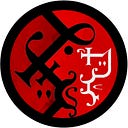The Felinar Hunters
For many centuries, the felinar tribes saw hunting as their ancestral purpose. “It’s in our blood,” went the saying; “we are built for it, and we ache for it.”
But that was long ago, in a time when the felinar and all their beastfolk kin observed the tenets of Diabolism and all the Beast Nations were a single jurisdiction of the Holy Infernal Empire (a province in name, but the de facto tenth principality).
The official doctrine of the Diabolical Church maintains that, before the Heavenly War and the Collapse, the felinar were divinely entrusted to retrieve fugitives escaped from Hell- be they escaped sinners or infernal beasts running wild. During the Empire’s rule, the felinar leaned into this myth, and many were sought out for affairs revolving around the hunt- whether for animals, people, objects, or even valuable intelligence.
In the Fifth Saeculum, after the nascent faith of the Spirits’ Way took hold in the Beast Nations, they seceded from the empire- and their peoples rejected all Diabolist beliefs and their attached mythologies. The new creed of the Spirits proclaimed that nobody is created for one purpose, talent is not the measure of anyone’s value, and the World Before is gone- and must be forgotten- for a new and different one to arise.
But is there any truth in the old Diabolical beliefs? Undeniably, the felinar seem biologically born to hunt. The average catfolk possesses highly acute low-light vision, retractable claws, and an excellent sense of balance- all distinct advantages in stalking game and catching quarries. And, if claiming that all felinar “ache for the hunt” is perhaps an exaggeration, there may be an echo of the divine purpose the Demiurge infused in the people of the world, a truth running deep in the body. Or maybe they just are drawn to what comes easy to them.
Near the Elf-Woods in the northeast and the Infinite Forest in the southwest, towns and villages of felinar hunters eke out a living in the trade of furs and other game products. These catfolk are at once master trappers and skilled bowmen, trained from childhood in the poaching wisdom of past generations. Some are aided by specially bred hunting foxes- bigger and more docile than wild specimens, but still agile and cunning. Different families specialize in different quarries and different hunting methods. Some may exclusively track deer, while others hunt wild griffins; some use bolas to capture prey alive, and others master the garrote to detach trophy heads with immaculate cuts.
It’s no surprise, then, that these felinars are famous for being “the greatest hunters in the world”- and they will do anything necessary to keep up this reputation. They embrace technological innovation- quick-reloading crossbows and mechanical traps- and even magic and alchemy, such as nets knotted in narcotic sigils or potions used as lures.
The question therefore becomes, who is the best of the best? Felinar hunters are competitive, always challenging and testing each other. The quickest way to earn prestige in the hunting business is to score a difficult game in a difficult way.
One of the hunters’ great nemeses is the Tomorrow Boar. These wild pigs can smell the future with their seven-nostriled snouts: they can’t sense very far forward into time, hence the name, but they can smell enough to know where predators will probably arrive a few hours in the future. They can even smell their own blood, foreseeing (well, foresmelling) their death and avoiding it. To make the task of hunting them harder still, boars will mark locations with different kinds of urine, signaling to other pigs if a given spot is safe or dangerous.
The “ancestral” hunting technique of the felinar is the ambush hunt: the hunter places herself at a strategic high-ground point and uses her bay foxes and a series of traps and ropes (often assembled by the hunter herself hours earlier) to “guide” the quarry in position. Then, she strikes from above, possibly with a melee weapon to showcase her bravery and strength.
To catch a Tomorrow Boar with this method implies days of planning, a perfect knowledge of the environment, a pack of hunting foxes loyal to the death, a mastery of herbalism used to concoct masking essences, refined ropework, trapping skills, tracking finesse, and a dozen other talents.
When a hunter returns to her village with a seven-nostriled boar head, celebration is due immediately. Any other hunters must swallow their pride, mask their envy, and congratulate the hero of the day. A stuffed boar head is the centerpiece of all hunters’ homes, placed in front of the main door so that everybody sees it upon entering.
But the thriving community of felinar hunters, while famous and admired worldwide, are not loved in their own country. Most other beastfolk, especially the native felinar of the Beast Nations, find themselves rather embarrassed by them. These hunters, with their fixation on personal prowess and laudation of “natural talents,” seem to them antiquated throwbacks to the Imperial times- times that are best forgotten. If a foreigner would dare assume that a felinar of the Nations must be good at hunting, the catperson in question would flinch in annoyance- hastily replying something like “Spirits, no, I’m not one of them.”
There is a particular religious root of this disdain. The Spirits’ Way preaches a message of harmony and communion between people and nature and a future built upon the actions of today (even in a metaphysical sense): petty disputes, status-seeking and wanton violence run fundamentally counter to this faith. Monks and preachers try their best to bridge the teachings of the Spirits and the lifestyles of the hunters, but a deep philosophical tension undercuts all of their efforts, and grand accusations of heresy are just around the corner.
